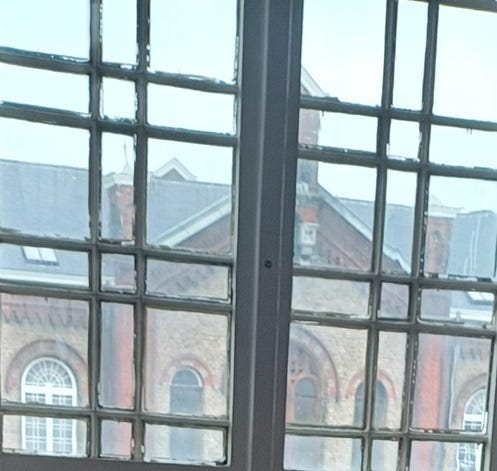Living in Edinburgh, I am no stranger to the gothic horrors of boutique medical museums. Anatomy/pathology and medical history collections at the Surgeons Hall Museum, Royal College of Physicians of Edinburgh and our neighbouring Hunterian Museum in Glasgow all contain weird and grotesque artifacts from olden times: invasive medical instruments and body parts in jars of formaldehyde. However, I have to admit that I have never been as disturbed by a collection as I was recently, when visiting the Museum Dr Guislain in Ghent, Belgium while attending and presenting at a conference called Too Mad to be True.
The Museum Dr Guislain, on the grounds of the oldest mental asylum in Belgium, is a museum of psychiatry. Alongside the trepanning kit and the old electroshock machine, the photos of miserable inmates and the bleak, detached signage explaining each artifact, I felt the presence of ghosts, the thousands of past lives who had been imprisoned there over the centuries.
One might imagine that these horrors are safely consigned to the past. One would be wrong. I recently heard the story of a young woman who even now is incarcerated in an isolation cell with only a mattress on the floor, in a psychiatric facility in England – where many services have been contracted out to the private sector. Keeping people incarcerated and drugged is profitable, especially when the charges for 'care' are inflated and the standard of 'care' remains Dickensian. This young woman's family has been informed that she will be there for many months, despite their continued and increasingly desperate appeals.
And please don't think that electroshock treatment is a thing of the past. It is alive and well, with ECT units in the most up-to-date hospitals. Somehow, people even now have no qualms about pulling the lever to adminster massive currents of electicity into their fellow human beings. Will they too someday serve as exhibits in the museum of psychiatry, while families picnic on the tables out in the courtyard?
We carry the traumas of our ancestors on our shoulders, as well as the current traumas of our neighbours and fellow citizens. The ghosts that linger in places like Museum Dr Guislain remind us that we too will become the ghosts that haunt the world with the lingering shadows of our suffering.
So although it was a very unsettling experience, I am very glad that I went along – if only to bear witness. There is still so much work to be done, to improve how we respond to mental crisis and madness. And I remain committed: to all those who have been committed. We made this system; we can make it better.








History happened and its consequences are here in the world we are in. I wonder about the extent that the most 'natural' = 'easy' trend is to follow like we are in an algorithm? To move out of the trend, we will /must work against instinct, takes enormous awareness and effort. Must start with witness, then what? who knows but the trend can be interrupted, just as madness has been cited (quite famously) as 'girl interrupted'. Thank you for writing.